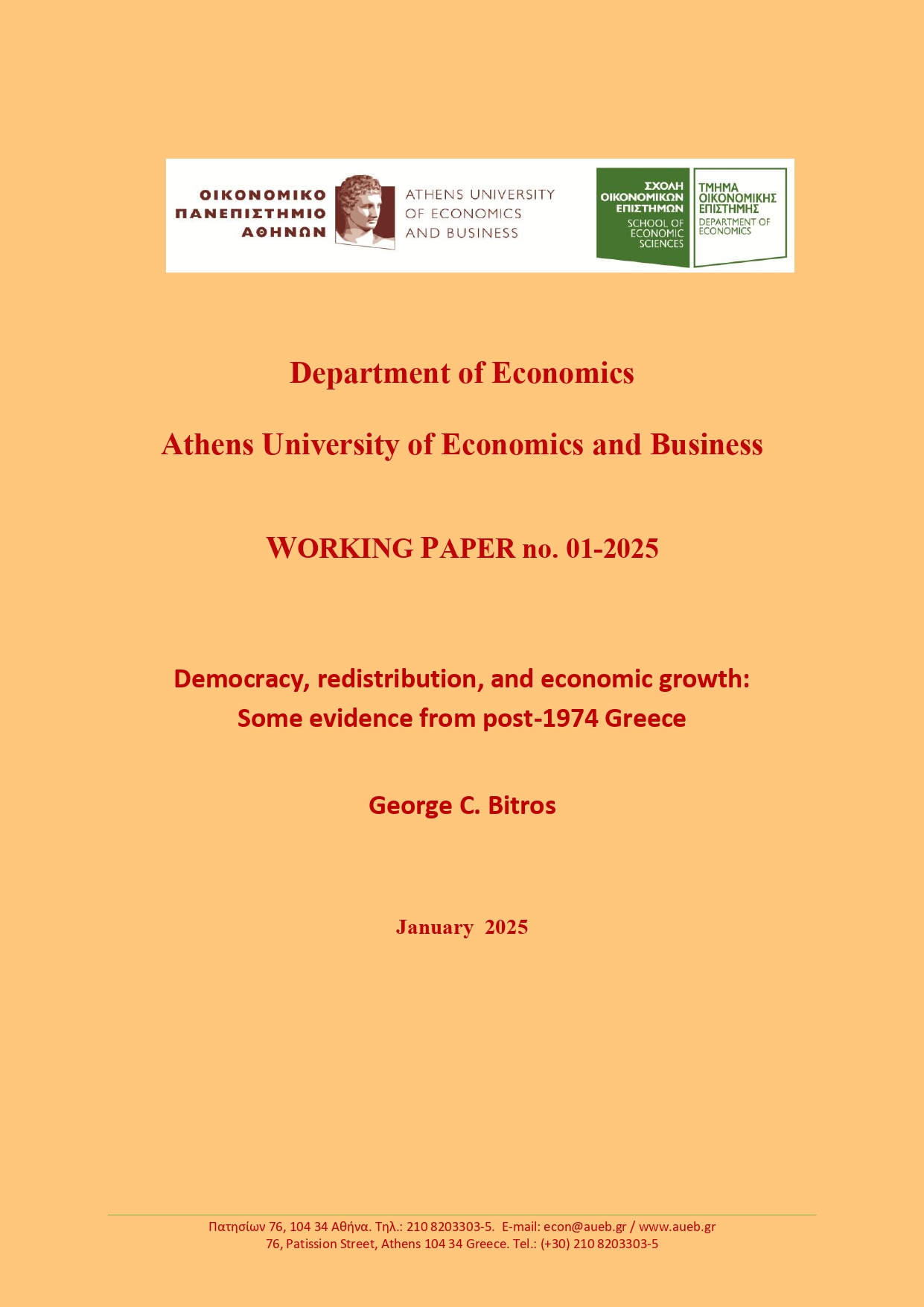Ανάρτηση Ερευνητικού Δοκιμίου no 01/25
του Γεωργίου Κ. Μπήτρου
Περίληψη
In the post war period Greece experienced two phases of economic growth. Over the years 1954-1974 the average annual growth rate was close to 7%, whereas from 1975 to 2022 the same growth rate fell to nearly 1%. This paper explains what went wrong. Using annual data from well-known international databanks for the period 1995-2023, the estimated dynamic ARDL model shows at no uncertain terms that responsible for the downward trend of economic growth during the post-1974 period was the multitude of redistribution policies that were introduced for the “expressed” purpose of reducing inequality. These policies by them selves would have discouraged saving, shrunk investment, suppress risk taking and entrepreneurship, and incentivize businesses and professionals to move abroad. This is exactly what happened. But while reducing inequality was the pretext for gaining the support of the people and maintaining political stability, the key objective of the political order under the 1975 Constitution was the expansion of the state which, based on the general government expenditure grew from 24.1% of the GDP in 1974 to 52.3% in 2023. And this, because in order to achieve the intended huge redistribution, governments killed economic growth by increasing incessantly taxes on income and wealth, burdening the economy with heavy value-added tax es, and expanding employment in the public sector, seemingly in a redistributive fashion to keep unemployment from exploding. Hence, to bring back economic growth and at the same time right democracy, my recommendation is to go back to the provisions and institutional arrangements of the 1952 Constitution or, even better, adopt the new constitution that six eminent Greeks proposed recently.
Ο Γεώργιος Κ. Μπήτρος είναι Ομότιμος Καθηγητής του τμήματος Οικονομικής Επιστήμης του Οικονομικού Πανεπιστημίου Αθηνών.






 Patision 76
Patision 76 2108203 303
2108203 303
